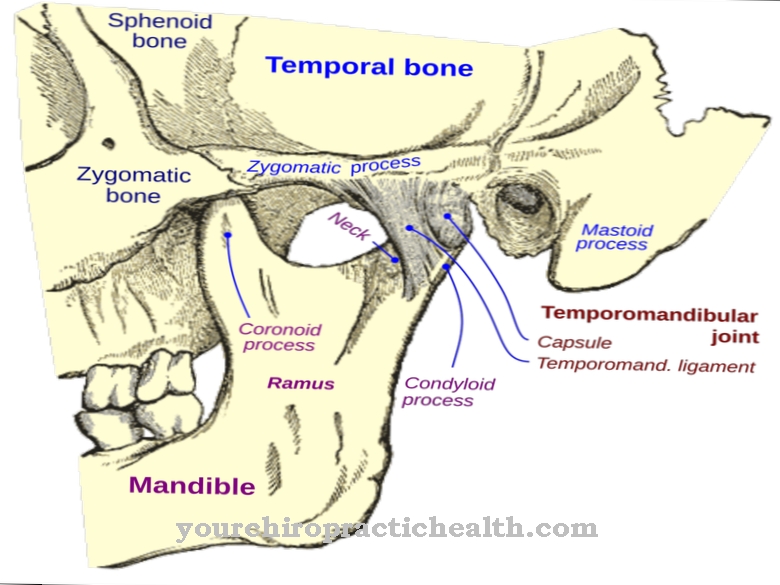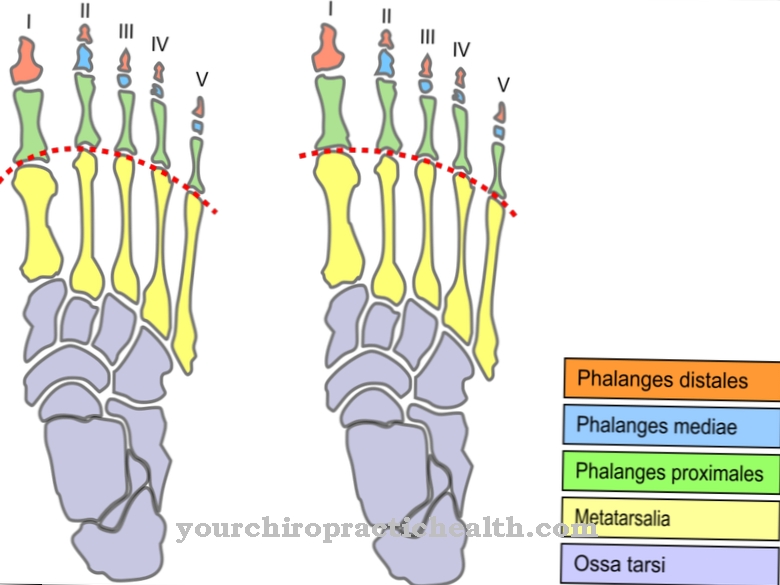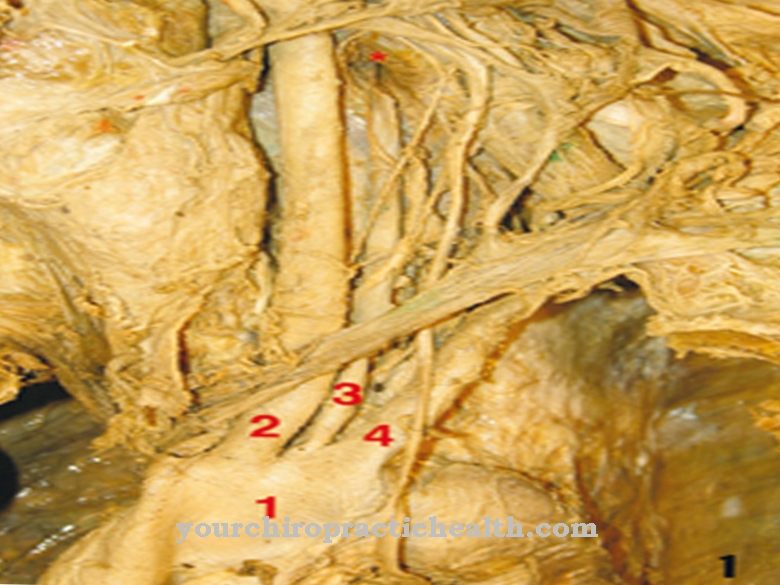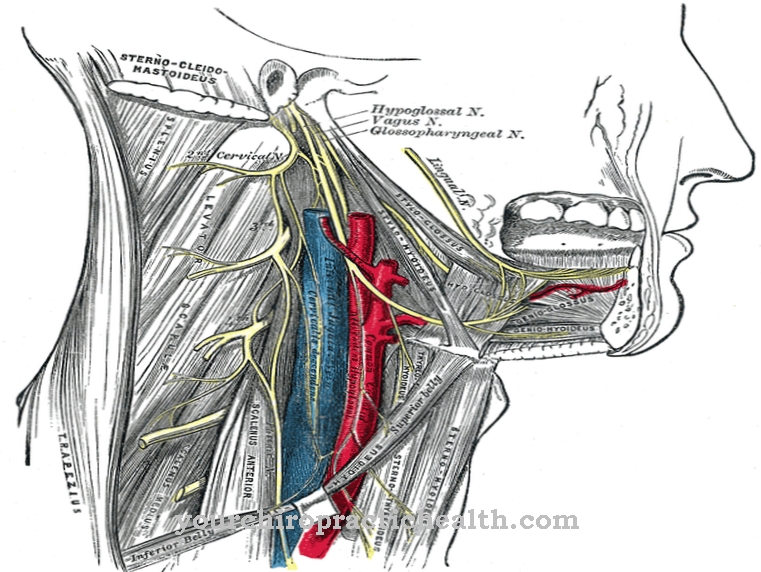The so-called Vitreous belongs to the middle sections of the eyes. In addition to the vitreous body, the middle segment of the eye also consists of the anterior and posterior chambers of the eye. The vitreous body is primarily responsible for the shape of the eyeball.
What is the vitreous?
The vitreous (in Latin Corpus vitreum called) represents a part of the eyes and belongs in anatomy and ophthalmology to the middle eye sections - these consist of the vitreous body and the anterior and posterior chambers of the eye. The vitreous body, which is made of a gel-like and transparent substance, ensures that the eyes keep their shape. It is located between the lens and the retina and thus represents a point through which the light passes on its way through the eye.
Anatomy & structure
The vitreous fills about two thirds of the entire eyeball. Due to its gel-like consistency, it is primarily responsible for ensuring that the eyes retain their shape even if the eyes are injured. Since it lies in the middle of the path of light to the retina, the vitreous body consists of 98 percent water and is usually transparent - i.e. in a healthy and normally developed eye.
As a result, despite its position, it enables good processing of the optical presentations. The remaining 2 percent of the vitreous usually consists of collagen and hyaluronic acid. With advancing age, however, the even structure of the vitreous can change.
Often the vitreous begins to liquefy with age, which can lead to irregular condensation in the substance of the gel-like tissue. In medicine this is referred to as flying points, colloquially as "flying mosquitos" or as fluff-like, twitching and moving structures that humans perceive. These structures usually wander around whenever the eye is in motion - which, depending on the severity of the liquefaction, can affect vision slightly or severely. Basically, however, this liquefaction is a harmless and normal change in the eyeball. Therapy is not necessary in most cases.
Function & tasks
The vitreous humor is an important part of the eyeball and belongs to the middle chamber of the eye. Here it is located between the lens and the retina and, thanks to its gel-like and thus elastic substance, ensures that the eye retains its shape even when exposed to external influences - e.g. when pressure is exerted on the eyeball or when it is injured.
In addition, the vitreous has a positive and supportive effect on the mobility of the eye, as its structure makes it more flexible as a whole. The vitreous body, which is positioned between the retina and the lens on the path that the light travels through the eye, does not impair the visual function, it is transparent. A healthy vitreous humor does not cloud or negatively affect eyesight.
You can find your medication here
➔ Medicines for visual disturbances and eye complaintsDiseases
The vitreous humor can be subject to a number of injuries and diseases that affect the entire eye. Frequent examples of this are inflammation (medically called uveitis), which can affect the entire eye and thus also the vitreous humor.
Which type of inflammation affects which part of the eye depends mostly on the trigger, such as an illness or an injury. A common disease of the vitreous humor is the so-called synchisis scintillans (also called spin therapy or spark vision), in which crystals made of cholesterol settle in the eye and in the vitreous humor. These complicate and influence, among other things, the view.
In addition to the liquefaction of the vitreous, which can set in with old age or due to various diseases, another common vitreous disease is vitreous detachment. This is referred to in ophthalmology when the vitreous body lifts or detaches from the top and back of the retina. This can also happen with age, among other things, but also as a result of an injury and an eye disease.
The vitreous body detachment is also often accompanied by a large-area liquefaction of the substance of the vitreous body. Depending on the severity of the detachment and liquefaction, ring-shaped or serpentine lines appear in the center of the patient's visual field. Basically, these can be compared with the "flying mosquitos", but could possibly occur more strongly than with a normal, age-related liquefaction of the vitreous substance.
And: Liquefaction of the vitreous humor, which is actually considered harmless, can also accompany retinal detachment. The latter can also be triggered by a vitreous detachment. For this reason, it is important to consult an ophthalmologist as a precaution, even with the smallest symptoms. Only this can rule out a disease requiring treatment.
The vitreous humor can also be affected by a vitreous hemorrhage, which can affect the patient's vision easily or severely. Bleeding in the eye must definitely be examined by an ophthalmologist and usually treated in order to avoid permanent damage to the eye and impairment of vision.
Vitreous hemorrhage can have various causes - for example, trauma triggered by an external influence or injury, vitreous detachment or new blood vessels. The latter can be triggered, for example, by a disease of the eye caused by diabetes (called diabetic retinopathy) or by an age-dependent circulatory disorder of the retina (macular degeneration).



























